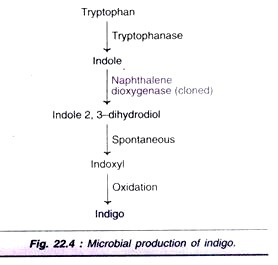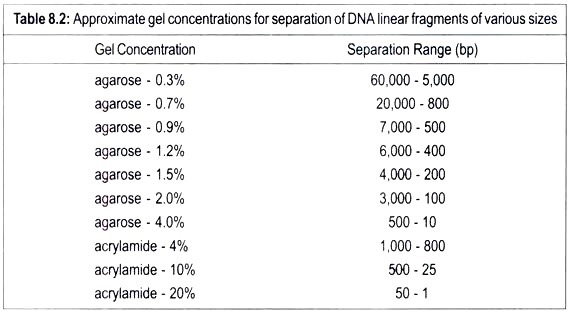ADVERTISEMENTS:
Let us make an in-depth study of the amino acids. After reading this article you will learn about: A. Sources and Products of Amino Acids and B. General Reactions of Amino Acids:- 1. Transamination 2. Deamination 3. Transmethylation and 4. Decarboxylation.
Sources and Products of Amino Acids:
Various sources and products of amino acids in the body:
The protein intake from exogenous sources amounts to about 80 grams/day. The dietary proteins are digested and absorbed contributing to the amino acid pool of the body. The endogenous proteins are hydrolysed to the extent of 140 grams/day which also contribute to the amino acid pool.
ADVERTISEMENTS:
The amino acids are used for the synthesis of tissue protein, enzymes, hormones and other proteins. They are also used for the synthesis of essential non-protein nitrogenous constituents like purines, pyrimidine’s, porphyrins, epinephrine, nor-epinephrine, melanin, etc.
Further, amino acids also undergo oxidative degradation to carbon dioxide and water releasing energy or donate their carbon back bone for the formation of glucose and ketone bodies during starvation and other diseases. The ammonia released from the oxidized amino acids is converted to urea in the liver and excreted through the urine. Excess amino acids to the extent of about 1 gram/day are excreted in the urine.
General Reactions of Amino Acids:
1. Transamination:
Transamination is a process of transfer of amino group reversibly from an amino acid to a keto acid. Transamination is a reaction in which the amino group from one amino acid is transferred to a keto acid to form a new keto acid and a new amino acid. The reaction is catalysed by the enzyme transaminase. Coenzyme required is pyridoxal phosphate (PLP). It is a bi-substrate reaction. A Schiff’s base is formed as an intermediate. The mechanism is called ping-pong reaction.
Generally three keto acids participate in this reaction. They are—(1) Pyruvate (2) α-keto glutarate and (3) Oxalo acetic acid. Transamination reaction mainly serves two roles in the amino acid metabolism—(a) Inter conversion of amino acids and (b) To channel the amino group of amino acids ultimately to glutamate and aspartate.
If these two amino acids are in excess than the requirement then the amino group is removed by deamination forming ammonium ion (NH+4) or urea which are excreted. All the amino nitrogen is ultimately concentrated on glutamate. Glutamate is the only amino acid in mammalian tissue that undergoes oxidative deamination at an appreciable rate.
2. Deamination:
Removal of amino group from the amino acids is known as deamination.
There are two types of deamination:
(a) Non-oxidative and
(b) Oxidative.
(a) Non-oxidative deamination:
Removal of amino group without oxidation is known as non-oxidative deamination. The enzyme is dehydrase, PLP acts as a cofactor. This occurs mainly on hydroxy amino acids like serine and threonine.
(b) Oxidative deamination:
Removal of amino group following its oxidation is known as oxidative deamination. It takes place both in the liver and kidney. The coenzymes involved are FMN and FAD which are reduced to FMNH2 and FADH2. The enzyme is amino acid oxidase which is auto oxidizable i.e. the reduced FMNH2 & FADH2 are re-oxidised directly by oxygen without the involvement of electron transport chain. Hydrogen peroxide is formed here, which is converted to water by catalase.
Glutamate dehydrogenase, one among oxidative deaminases is an allosteric enzyme. ATP, GTP and NADH act as negative modulators whereas ADP acts as -a positive modulator. It converts glutamate to α-keto glutarate and ammonia.
3. Transmethylation:
ADVERTISEMENTS:
It is a process in which there is the transfer of methyl group from a donor to the acceptor.
4. Decarboxylation:
Reactions in which removal of CO2 takes place from the carboxylic group of amino acids. Enzyme catalysing the reaction is decarboxylase. Cofactor is PLP. An amine is formed due to decarboxylation. The amines so formed are known as ‘biogenic amines’. This is mainly confined to G-I tract where due to the putrefaction in intestine, toxic amines like tyramine, tryptamine, putrescine and cadaverine are formed. However some amines are useful.
Additional Information:
Metabolism of Ammonia:
Formation of Ammonia:
Ammonia is formed in the tissues and also by the intestinal bacteria from the dietary proteins. All the ammonia is absorbed into the portal venous blood which generally contains higher level of ammonia compared to systemic blood. Generally liver is virtually free from ammonia. Normal blood level is 10-12 μg/dl. Prompt removal of ammonia is essential, because even minute quantities of ammonia in blood are toxic to CNS.
The symptoms called ammonia intoxication includes flapping tremor, slurring of speech and blurring of vision and in severe cases coma and death. It is similar to hepatic coma (with impaired hepatic function or any abnormality in portal and systemic veins), wherein increased ammonia level is seen. This can be corrected by surgery (shunting method).
The ammonia content of blood in renal vein is more than renal artery indicating that kidney produces ammonia. The production of ammonia is very important in regulating the acid-base balance and conservation of cations like Na+ and K+ ions. This ammonia is formed by glutaminase enzyme in the kidney tubules.
Transport of Ammonia:
Removal of ammonia takes place by the following mechanisms:
ADVERTISEMENTS:
1. Amination of α-keto acid to form amino acids.
2. Amidation of glutamic acid to glutamine.
3. Formation of urea in the liver.
Ammonia from the brain is released as glutamine and as a result more and more glutamine enters the liver. But the supply of glutamine to the brain is limited and when blood ammonia level is high, the intermediate of the TCA cycle i.e. α-ketoglutarate is used for the formation of glutamine. This results in depletion of the TCA intermediate which is replenished by anaplerosis from other amino acids by carbon dioxide fixation in the brain.
Inter organ amino acid exchange:
Muscle tissue releases alanine and glutamine, whereas kidney releases serine, which are taken up by the splanchnic tissues (in liver). Hence, there is fairly close correspondence between the output of most amino acids from peripheral muscle and their uptake by the splanchnic tissues.
Liver takes up more of alanine and glutamine and less of valine, because the oxidation of branched chain amino acids is relatively more in the brain compared to other tissues. The uptake of valine by brain is more than other amino acids.
Glucose-alanine cycle:
The main purpose of this cycle is to transport ammonia from the muscle to the liver and to supply the glucose from the liver to the muscle. Alanine is synthesized from pyruvate in muscle blood stream and taken up by the liver where it is the blood stream that forms a source of glucose to by transamination of glutamate, released into the converted to glucose by gluconeogenesis and enters muscle.
Conclusion:
Ammonia formed in different tissues is transferred to the liver in its amide form, as glutamine from brain and peripheral tissue and from muscle as alanine. Ammonia is mainly transferred in the form of alanine, glutamine, asparagine and serine.
Excretion of Ammonia:
ADVERTISEMENTS:
Ammonia is excreted in three different forms in various species, they are:
1. In fishes it is excreted as ammonia hence they are known as ammonotelic animals.
2. In uricotelic animals like birds and lizards, ammonia is excreted as uric acid. In ureotelic animals including humans, ammonia is excreted as urea.









